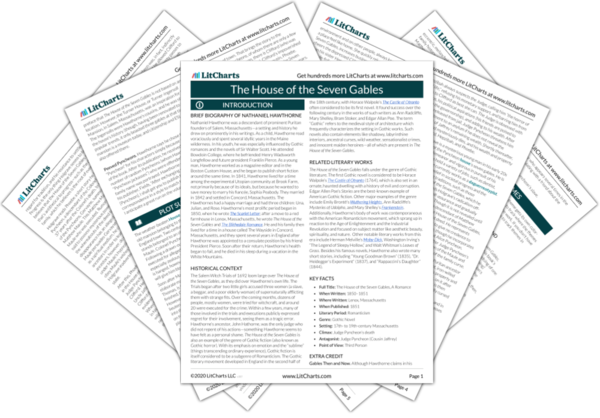Holgrave sees houses as symbols of people’s irrational attachment to the things of the past—the past being the enemy of progress. If people weren’t so attached to edifices, he believes, they would be more critical of their ideals and more open to reform and progress. For him, the Pyncheons and the House of the Seven Gables are a case study for this theory.
